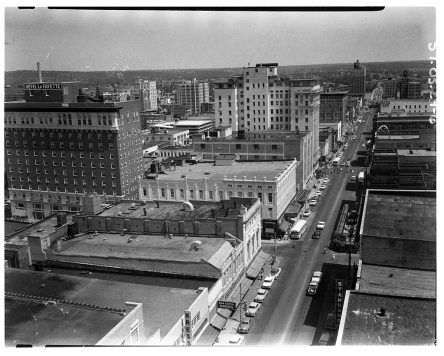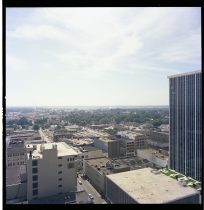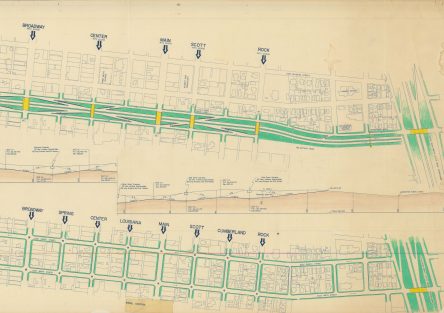The Center for Arkansas History and Culture has been awarded a $50,000 Humanities Collections and Reference Resources grant from the National Endowment for the Humanities (NEH). CAHC’s Mapping Renewal project is an 18-month pilot that will bring together humanities scholars and technical specialists to select, digitize, describe, and create a website to share archival maps, documents, architectural drawings, and photographs related to urban renewal in Little Rock.

“These new NEH-supported projects deepen our understanding and appreciation of the traditions, values, and historical figures who have shaped our country,” said NEH Senior Deputy Chairman Jon Parrish Peede. CAHC’s project will empower scholars and the general public alike to explore questions such as what are the political, social, and economic effects of the growth of cities; why cities change over time; and how the built environment and geography shape the history of a place.
 In the 1960s, urban renewal in central Little Rock comprised one of the largest demolition and clearance programs in the country. As a result of renewal efforts, Little Rock’s Central High district shifted from being a majority-white to a predominantly-African American neighborhood and the Ninth Street Corridor, the city’s African American business district, was cleared of its inhabitants and businesses to make way for freeway construction.
In the 1960s, urban renewal in central Little Rock comprised one of the largest demolition and clearance programs in the country. As a result of renewal efforts, Little Rock’s Central High district shifted from being a majority-white to a predominantly-African American neighborhood and the Ninth Street Corridor, the city’s African American business district, was cleared of its inhabitants and businesses to make way for freeway construction.
The Mapping Renewal project will not only digitize important historic materials from this period and make them freely available online, it will develop methods that can be used nationally for describing place-based materials in ways that others can easily find. Because this project includes many maps and architectural drawings, the team will attach geospatial data to the digital files so that computers and Geographic Information Systems can be used for analysis.
 In addition to scholars and educators, the project aims to engage the general public in exploring the questions central to the grant. By holding focus groups in the communities affected by the project, CAHC staff will gather input from members of the public on ways to describe and present these resources that are meaningful to them.
In addition to scholars and educators, the project aims to engage the general public in exploring the questions central to the grant. By holding focus groups in the communities affected by the project, CAHC staff will gather input from members of the public on ways to describe and present these resources that are meaningful to them.
“This grant will not only allow CAHC to put important historical resources on the web for scholars, educators, and the general public to use, but it will provide a forum for us to work with the public to develop best practices for describing and cataloging resources dealing with the built environment. Our ultimate goal is to empower anyone to explore and question history to better understand the present,” said Deborah Baldwin, associate provost for the UA Little Rock Center for Arkansas History and Culture.


